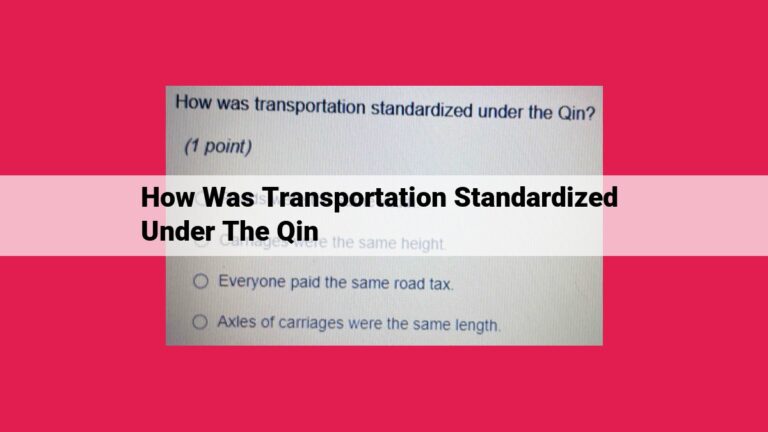Shay’s Rebellion: Uncovering The Failures Of The Articles Of Confederation And Paving The Way For The Constitution

Shay’s Rebellion exposed the weaknesses of the Articles of Confederation, highlighting the absence of executive and judicial branches, financial weakness, economic chaos, and vulnerability to foreign threats. These limitations hindered the federal government’s ability to enforce laws, resolve disputes, raise funds, regulate commerce, and defend the nation. The rebellion’s impact led to the drafting and ratification of the Constitution, which addressed these shortcomings by establishing a stronger federal government with a separate executive, judicial branch, and increased authority.
**Shay’s Rebellion: The Catalyst for a Stronger Union**
In the aftermath of the American Revolutionary War, the Articles of Confederation established a confederal government that granted significant autonomy to individual states. However, the weaknesses inherent within this framework were starkly exposed by the uprising known as Shay’s Rebellion. This event played a pivotal role in highlighting the shortcomings of the Articles of Confederation and paved the way for the drafting of the United States Constitution.
Defining Shay’s Rebellion
Shay’s Rebellion, which occurred in western Massachusetts from 1786 to 1787, was a violent response to economic hardship and perceived unfair taxation. Led by Daniel Shays, a veteran of the Revolutionary War, the rebellion targeted courthouses and symbols of government authority, demanding economic relief and political reforms. The rebellion was eventually suppressed by state militia and federal troops, but its lasting impact extended far beyond its immediate resolution.
Absence of Executive and Judicial Branches: A Crippling Weakness of the Articles of Confederation
The Articles of Confederation, the first governing document of the United States, lacked crucial branches essential for a functioning government: the executive and judicial. This fundamental flaw crippled the federal government’s ability to effectively enforce laws and resolve disputes.
The absence of an executive branch meant that the Articles of Confederation failed to establish a central figure with the authority to carry out the laws and decisions of Congress. This resulted in widespread disregard for federal laws and regulations, as states and individuals acted with impunity. The executive branch is responsible for the implementation and management of government policies, a critical role that was severely lacking under the Articles of Confederation.
Similarly, the lack of a separate judicial branch severely hindered the federal government’s ability to resolve disputes and interpret laws. Without a supreme court or other judicial bodies, the Confederation had no means to enforce contracts, resolve conflicts between states, or protect individual rights. This legal vacuum created chaos and uncertainty, as disputes often remained unresolved and laws were enforced erratically.
Financial Weakness: A Crippling Limitation of the Articles of Confederation
One of the most glaring deficiencies of the Articles of Confederation was its inability to raise funds through taxation. This crippling financial weakness severely undermined the federal government’s operations, hindering its ability to fulfill its responsibilities.
Under the Articles, the federal government could only request funds from the states. However, states were under no obligation to comply with these requests. As a result, the federal government was chronically short of revenue. This financial instability made it difficult to pay debts, support the military, and carry out essential functions.
The inability to raise taxes had a devastating impact on the military. During the Revolutionary War, the Continental Army suffered from a constant shortage of supplies and equipment due to the lack of funding. After the war, the federal government was unable to pay off its war debts, damaging its credit and making it difficult to borrow money in the future.
Furthermore, the financial weakness of the Confederation undermined its ability to regulate commerce. Without the power to impose tariffs or other taxes, the federal government could not prevent states from engaging in unfair trade practices. This led to economic chaos, with states competing against each other for business, resulting in lower prices and increased competition.
The financial crisis created by the Articles of Confederation was a major factor in its eventual failure. The inability to raise funds left the federal government unable to effectively address the nation’s problems, leading to widespread dissatisfaction and ultimately the call for a new constitutional framework.
Economic Chaos: A Major Weakness of the Articles of Confederation
The Articles of Confederation, the governing document of the United States from 1781 to 1789, failed to provide the federal government with the power to regulate commerce. This glaring omission led to a chaotic economic landscape, characterized by barriers to trade and a disruption of the national economy.
States’ Authority over Commerce
Under the Articles of Confederation, individual states retained the sole authority over commerce within their borders. They were free to set tariffs, impose regulations, and restrict trade with other states. This patchwork of state-level regulations created a maze of obstacles for merchants, hindering the flow of goods and services across the country.
Barriers to Interstate Trade
The lack of a uniform system of trade laws allowed states to engage in protectionist policies that favored local businesses. For example, some states imposed heavy duties on goods imported from neighboring states, making it more expensive for consumers to purchase goods produced elsewhere. Others established quotas or outright banned the import of certain products, creating artificial scarcities and driving up prices.
Disruption of the National Economy
The resulting impediments to trade had a ripple effect on the national economy. Farmers struggled to sell their produce to out-of-state markets, leading to surpluses and depressed prices. Merchants faced uncertainty and risk when transporting goods across state lines, discouraging investment and innovation. The lack of a central authority to regulate commerce created a fragmented marketplace, hindering economic growth and prosperity.
The Impact of Shay’s Rebellion
The economic chaos caused by the lack of federal authority over commerce was a major factor in the outbreak of Shay’s Rebellion in 1786. Farmers burdened by debt and facing foreclosure due to low crop prices took up arms against state governments in Massachusetts and other states. The rebellion highlighted the urgent need for a stronger central government capable of addressing the economic grievances of the people.
The Constitutional Response
The glaring weaknesses of the Articles of Confederation, including its inability to regulate commerce, led to the drafting and ratification of the United States Constitution in 1789. The Constitution granted the federal government the exclusive power to regulate interstate and international commerce, thus eliminating the barriers and chaos that had plagued the economy under the Articles of Confederation.
Vulnerability to Foreign Threats Exposed by Shay’s Rebellion
The Articles of Confederation’s Fragile Defense
Under the Articles of Confederation, the United States lacked a centralized national army. Instead, each state was responsible for raising and maintaining its own militia. This decentralized defense system proved woefully inadequate in protecting the nation from foreign threats.
Reliance on State Militias: A Recipe for Weakness
State militias were composed of citizen-soldiers with limited training and equipment. They lacked the discipline and cohesion of a regular army. Moreover, states were reluctant to send their militias beyond their own borders, limiting the federal government’s ability to respond to threats outside of state lines.
Invulnerability to Foreign Invasion
The Confederation’s reliance on state militias left the nation vulnerable to foreign invasion. In 1787, for example, Spain threatened to seize the Mississippi River Valley. The Confederation, lacking a national army, was unable to prevent Spain from occupying the region.
Limited Ability to Protect Interests
The weakness of the Confederation’s defense system also hindered its ability to protect American interests abroad. The United States was unable to negotiate favorable trade agreements or enforce its rights against foreign powers. This weakness exposed the nation to economic exploitation and diplomatic setbacks.
The Catalyst for Constitutional Reform
Shay’s Rebellion highlighted the critical need for a stronger national government with the ability to defend the nation from foreign threats. The rebellion convinced many Americans that the Articles of Confederation were inadequate and needed to be replaced. The Constitution, which was drafted in 1787, addressed this issue by creating a national army and giving the federal government the exclusive power to declare war.





